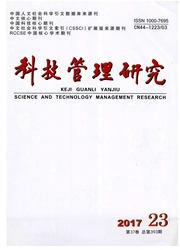

 中文摘要:
中文摘要:
专利许可是实现专利权价值的重要方式,也已成为企业知识产权战略的重要内容,相应地,因专利许可产生的许可人与被许可人之间的冲突和纠纷数量也急剧增加。针对中国大陆专利许可中发生的冲突及其处理模式问题.运用霍夫斯泰德史化维度和托马斯-克尔曼二维冲突处理模式的交互影响作用,在此基础上建立坐标形成可视化结果。实证结果表明:影响中国大陆专利许可冲突处理模式的主要文化维度为弱不确定性规避、阳刚气质和低权力距离;冲突双方倾向于选择合作与竞争的方式处理冲突。埘比研究中发现,不同行业中文化维度对于专利许可冲突处理模式的影响程度有所不同:教育行业冲突双方倾向于选择合作与迁就的方式处理冲突;科研机构与技术服务业冲突双方倾向于选择竞争与合作的方式处理冲突。
 英文摘要:
英文摘要:
With the rapid development of science and technology, patent licensing has become the most typical business model for technology commercialization and excess profits achievement. In turn, conflicts between lieensors and licensees about the duration, exclusiveness, subhcense, technical assistance, payment and other isses of patent have also increased indefinitely. This study attempts to explores the influence of the Hofstede's cultural dimensions(power distance, uncertainty avoidance, individualism versus collectivism, femininity versus masculinity, and long-term versus short-term orientation)on the choice of conflict resolving strategies for patent licensing in mainland China. The conflict modes arc studied based on Thomas-Kilmann conflict mode instrument (competing, collaborating, compromising, avoiding and accommodating). Experts from industries and professional organizations are involved in the investigation. The empirical results reveal thai conflict resolution modes for patent licensing are affected by weak uncertainty avoidance, masculinity and low power distance in mainland China. Comparative analysis shows that collaborating mode and accommodating mode are preferred in the education industry, and competing mode and collaborating mode are preferred in research institutions and technology services organizations.
 同期刊论文项目
同期刊论文项目
 同项目期刊论文
同项目期刊论文
 期刊信息
期刊信息
